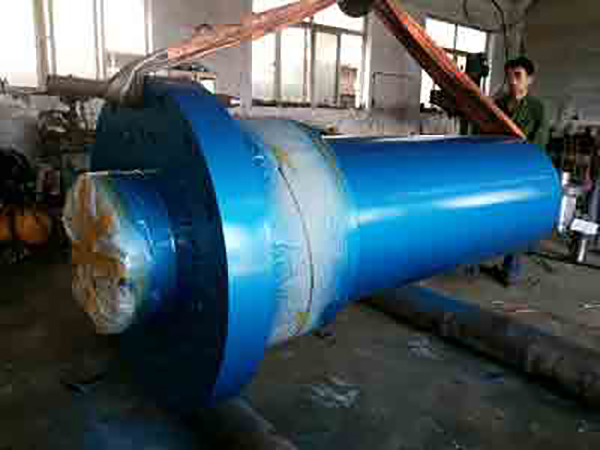Recently, at the Industry 4.0 event organized by TEConnectivity, a reporter from China Industry News interviewed Li Jie, a professor at the University of Cincinnati, who focuses on big data and industry 4.0 research, and the vice president and industrial division of TEConnectivity, a leading enterprise in the field of connectivity, China. Stefan Rustler, general manager. As outstanding scholars and corporate executives in the industry, they explained their views on the development of Industry 4.0 in a dialogue with reporters from China Industry News.
Industrial big data needs urgent attention
The German academic and industrial circles believe that the concept of "Industry 4.0" is the fourth industrial revolution, or revolutionary production methods, led by intelligent manufacturing. In Professor Li Jie's view, products to be produced in the Industry 4.0 era must not only have functions, but also have value. Value is obtained through data processing. Nowadays, big data is a very hot topic, but industrial big data has received limited attention. Industrial big data refers to the data information involved in a product manufacturing process or an industrial system, just like the data information designed for health management, earthquake treatment, and bank operations. But in fact, industrial big data is of great significance to the entire industrial upgrading.
Li Jie believes that the core of Germany is manufacturing, so the definition of Industry 4.0 proposed by Germany actually defines manufacturing. However, the existing manufacturing system urgently needs a more in-depth analysis of the manufacturing equipment itself and the data generated during the manufacturing process. In this regard, Li Jie proposed the 5C theory of Industry 4.0, which contains five Cs: one is Connection, which refers to connection, which involves sensors and networks, connecting devices as the basis for data collection; the second C It is Conversion, which means conversion. The data collected in the Connection process must be converted into information. The third C is Cyber, which is content; the third C is Cognition, which is cognition; and the fifth C is Configuration, which is configuration. For example, from mobile phones to WeChat, to sharing animations, videos, and interactions on WeChat, in the future, we can even use WeChat to manage home appliances, tube lights, watch family safety and care. This process is the transformation from Connection, Conversion, Cyber, Cognition to Conjunction figure. And among these five Cs, big data will run through.

Industry 4.0 brings more opportunities
In Li Jie's view, companies whose business involves the above 5C categories will have good development opportunities in the future. For example, TEConnectivity, Li Jie believes that it will be a core enterprise that can influence the future of Industry 4.0. Because TE is to be a C, that is, to be a Conjunction enterprise. If TE can continue to create patented technologies and products and become one of the core technologies supporting the future 4.0 transformation, coupled with its official global layout, TE's future development prospects are very impressive.
Stefan Rustler, vice president and general manager of the industrial division of TEConnectivity in China, said: "I very much agree that TE has a lot of room for development. First of all, TE will launch many new products every year to ensure a certain annual growth space. According to statistics, the company The sales of products developed within three years account for about 25% of the company’s sales. At the same time, TE also pays attention to opportunities for mergers and acquisitions, hoping to get a better platform for enterprise and product development. Secondly, TE attaches great importance to market strategy and market development. TE’s global network coverage is very wide, and it has also been increasing investment in fast-growing countries and markets such as China, India, Africa, and South Africa, thereby gaining TE’s own rapid growth."
It is understood that TEConnectivity currently has nearly 18,000 patented technologies worldwide. Regarding the impact of Industry 4.0 on the connectivity industry, Stefan Rustler added: “First of all, from the perspective of the development trend of connectors and sensors, we have seen that the future industrial development requires increasingly high-speed connection technology. There are also more requirements. We believe that future connectors will become smaller and smaller, transmission speeds will become faster and faster, and connections will become more and more reliable."
Made in China experienced three stages
Li Jie pointed out that China's manufacturing is facing a transition from growing domestic demand to growing external demand. In this process, for China's manufacturing to move towards Industry 4.0, there will be three stages:
The first stage, review. That is to reflect on and study the weaknesses that China has made in the past 20 years, and improve and avoid them accordingly.
The second stage is the transformation from a large manufacturing country to a manufacturing power. "Made in China" products will not only be MadeinChina, but also MadeinUSA and MadeinSpain. Possessing worldwide production capacity is also the embodiment of a manufacturing power.
The third stage: Improve user experience. Products made in China are sold abroad, not only on product quality and price, but also on value. Li Jie also emphasized that the value of a product is highly relevant to innovation.
Chinese manufacturing is undergoing earth-shaking changes, and the basic components such as connectors and sensors are also accelerating upgrades. Stefan Rustler said: “TE hopes to help local customers create value and achieve industrial upgrading. The entire TE has invested in 20 factories in China. On this basis, this investment is still being further increased. TE currently faces the most important needs of customers. It is multi-variety, small batch, and TE provides solution-style services, so it can adapt to the requirements of production management in this market according to different industries of customers. In addition, unlike ordinary companies, TE’s R&D department has a task It specifically considers the development trend of the future market and makes certain technical reserves. For example, TE has been promoting ARISO wireless connection technology in the past two years. For the Chinese market, it is also a very important technical reserve, and its most important changes That is, in the future, wireless connection technology may be applied in the industry. These are important manifestations of TE's efforts to help Chinese companies move towards 4.0."
Li Jie finally said that the most lacking thing in China's Industry 4.0 is not the Internet of Things, what is lacking is how to analyze the data after the Internet of Things is collected. This is also the focus of the world's work towards Industry 4.0.
Business manager phone:13470397782 Office phone:0419-7148218ext.802 mailbox:slcxjx@163.com
Business office phone:0419-2621118 Technical business phone:0419-7148218ext.805 address:Shaling Town, Taizihe District, Liaoyang City
